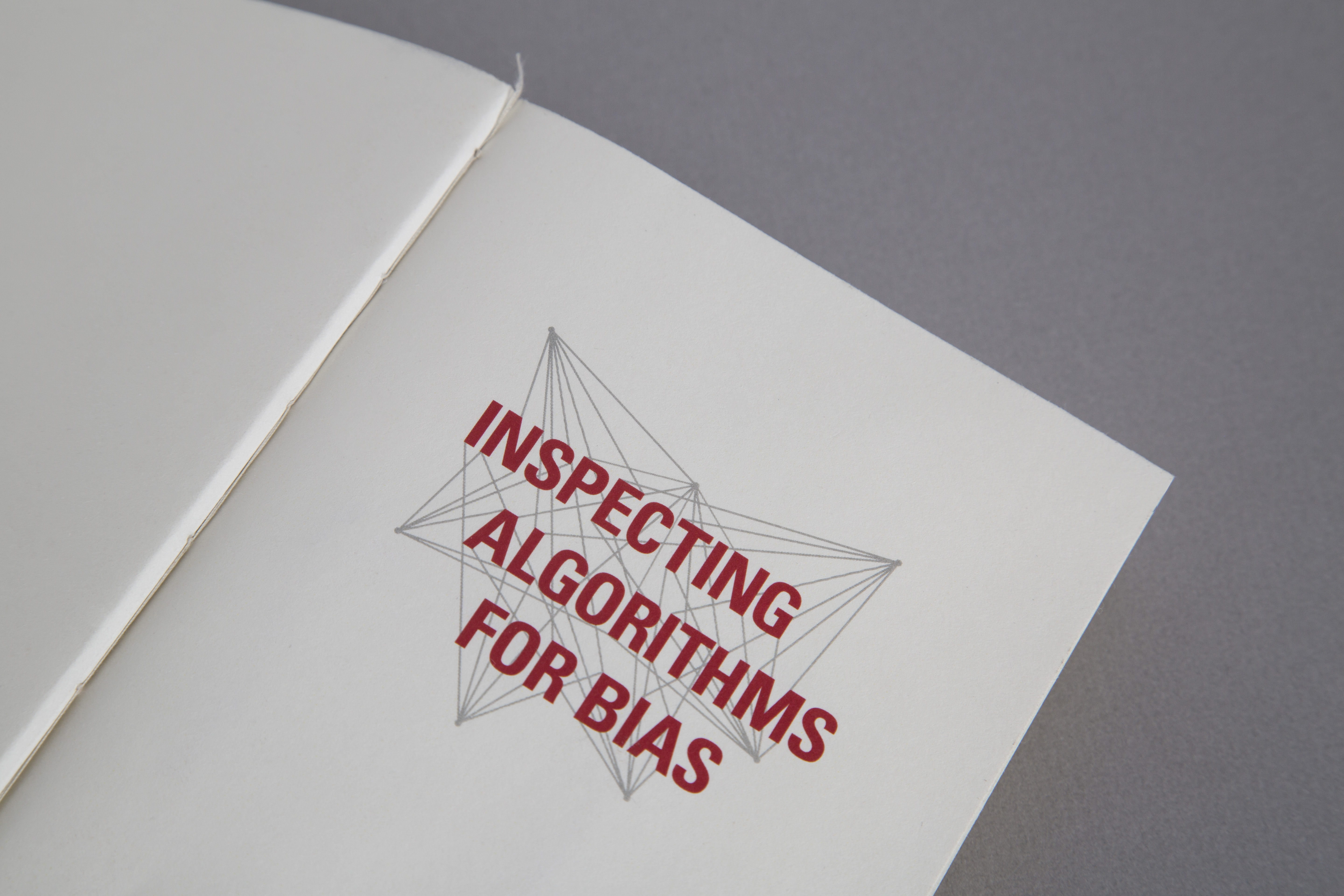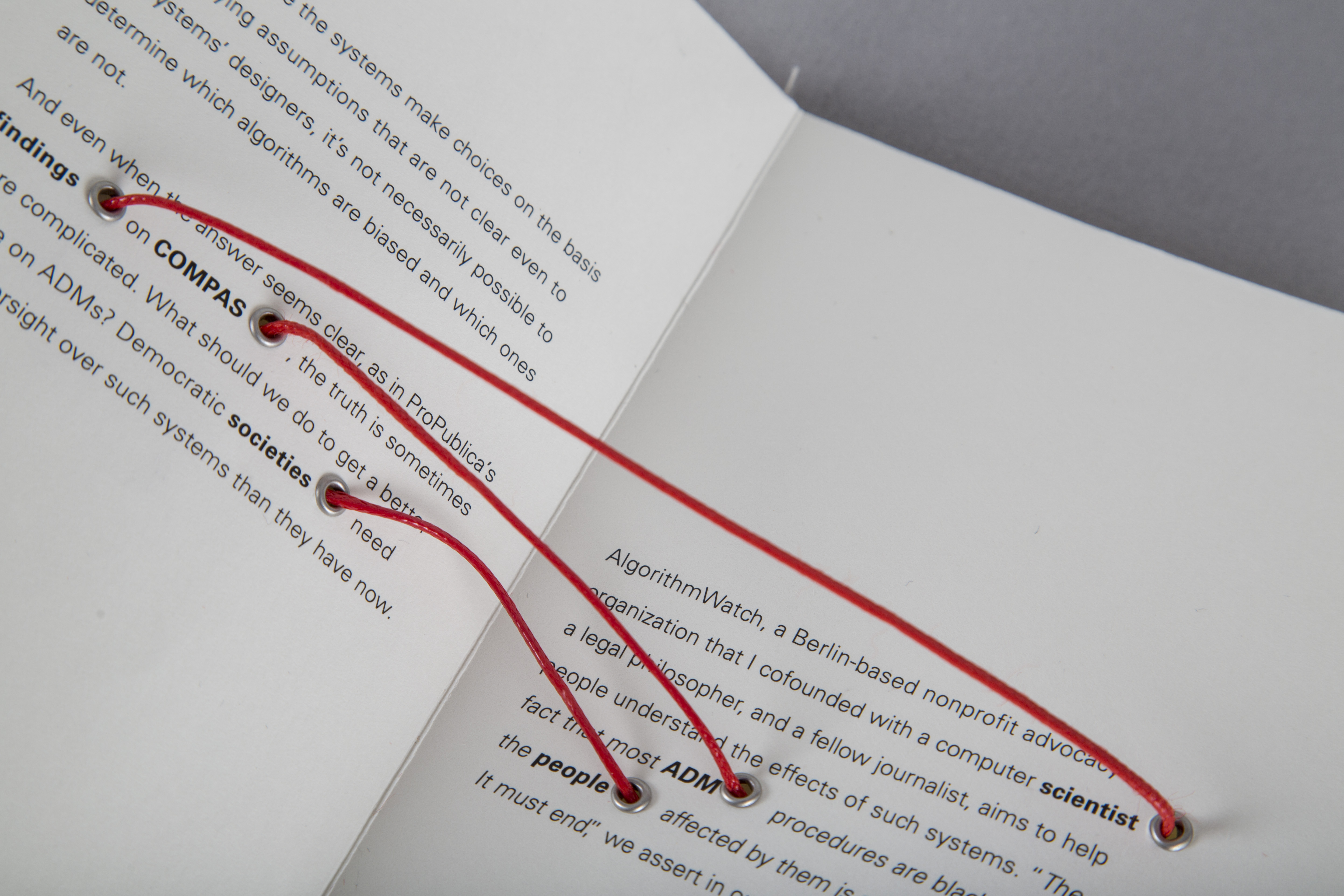—
How do you make AI feel more approachable?
Artificial Intelligence seems to be the buzzword of the decade. When thrown casually into conversation, it can bring with it a certain fear. From becoming outsmarted by machines to having our behaviours predicted, this unease is often caused by not knowing what exactly it is or does.


An article published in MIT Technology Review about the use of AI in the American judicial system was chosen to convey the helpful nature of machine learning – especially in recognizing human bias. After providing thousands of recidivism cases for a neural network to analyze, COMPAS (an Automated Decision-Making system) found that there was significant racial bias in the process of labeling ex-convicts as high-risk.

Human intervention is undeniably present in the book's form, introducing a feeling of familiarity to dispel some of the apprehension towards learning more about AI. The handcrafted nature of the book – kettle stitch binding, hand-set eyelets, woven string connections, and warmer white paper – presents the data in an approachable, less stiff manner.
On each page, bolded words of semantic similarity are connected through red string. When turning a page the string is fed into the next spread. The reader can feel the tactile nature of intersecting strings pulling against the paper and eyelets, loosely resembling a neural network.
